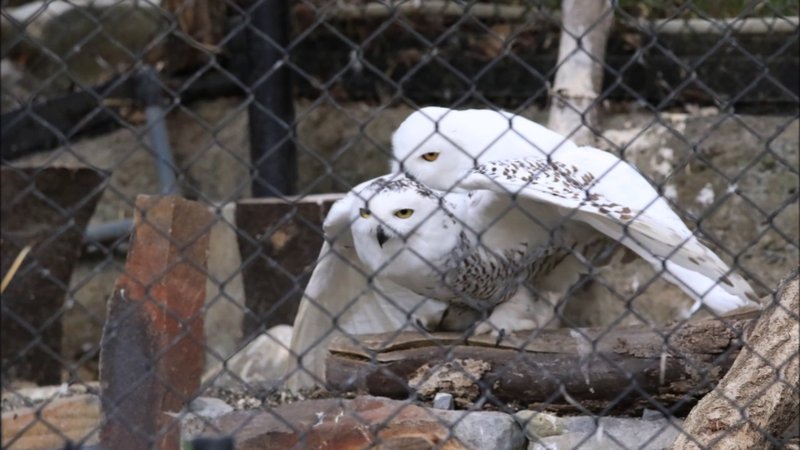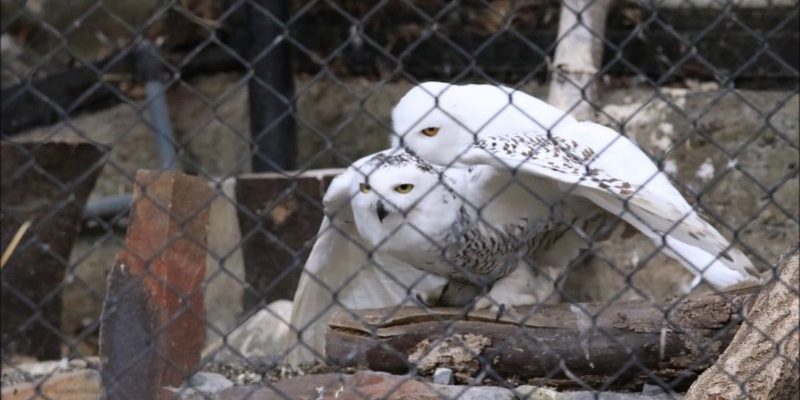
Imagine a snowy owl soaring gracefully over its territory. Each swoop and dive is part of a ritual that starts long before the actual mating process. Just as some animals might perform a dance to woo their partners, snowy owls rely on a series of displays to communicate with potential mates. Here’s the thing: understanding their courtship rituals not only gives us insight into their lives but also highlights the incredible adaptations these birds have developed to thrive in the chilly northern latitudes.
Understanding the Snowy Owl’s Habitat
Before diving into their courtship and mating rituals, let’s get a grasp on where snowy owls call home. These majestic birds are primarily found in the Arctic regions of North America and Eurasia. They’re used to vast, open spaces with few trees, which allows them to spot potential prey easily.
The snowy owl’s habitat is mainly tundra, characterized by cold temperatures, seasonal changes, and a short summer growing season. This environment shapes not just their hunting habits but also their reproductive behaviors. During the breeding season, which occurs between late spring and early summer, you’ll find them moving southward from the Arctic to more temperate regions, seeking out open, treeless areas.
In these expansive landscapes, communication becomes vital. Snowy owls rely on visual displays and vocalizations to attract mates and establish territories. You might be wondering how they do this, and that leads us right into the heart of their courtship process.
Territorial Displays
Snowy owls are known for their territorial displays during the mating season. As they prepare to find a partner, male snowy owls will establish their territories, engaging in a mix of vocal calls and aerial displays to warn off rivals and attract females.
Males will often perch on high points—like a snowy hill or an outcropping—where they can be easily seen. Here, they puff up their feathers, spread their wings, and emit a series of hoots and whistles. These calls aren’t just for show; they’re a way to announce, “Hey, this is my spot!” Honestly, it’s like a competitive performance, showcasing strength and fitness to potential mates.
Females are typically attracted to the most dominant males, those who can best defend their territory. This behavior ensures that the strongest genes are passed on to the next generation, contributing to the species’ survival in the challenging Arctic climate.
Vocalizations in Courtship
You might be surprised to learn that vocalizations play a significant role in snowy owl courtship. While they have standard calls for communication and hunting, their mating calls are distinct and quite crucial. Male snowy owls typically produce low-pitched hoots that resonate through the crisp Arctic air.
During courtship, a male might engage in a “courtship display” of vocalizations that include a mix of hoots and whistles, which can be both enchanting and mesmerizing. Females will respond with their own calls, creating a sort of duet that resonates through the tundra.
This exchange of sounds is vital, as it helps both owls assess each other’s health and fitness. Here’s the thing: in such a harsh habitat, finding a partner who is strong and healthy can make all the difference in raising successful offspring.
Physical Displays and Dance
Once a male has established his territory and caught the attention of a female, the next step involves more physical displays. Snowy owls engage in aerial dances that are both beautiful and strategic. These displays often take place during the *early morning or late afternoon*, when the light is just right, highlighting their stunning plumage.
During these aerial displays, males will fly in large circles, dipping and rising in a graceful dance. They may also perform acrobatic stunts like flipping over or gliding low across the ground, showcasing their agility and fitness. When a female is impressed, she may respond by joining in the flight, making it an enthralling sight against the stark white backdrop of the snow.
These physical displays serve multiple purposes: they not only fascinate potential mates but also demonstrate the ability of the male to engage in complex maneuvers, hinting at his strength and vigor. In a way, it’s a grand performance that captures both the elegance and power of these magnificent birds.
Nesting and Parenting Behaviors
Once the snowy owls pair up, the next chapter begins: nesting. Snowy owls do not build typical nests. Instead, they choose sites on the ground, often on a slight rise or among rocks to ensure safety from predators. Females lay anywhere from 3 to 11 eggs, which they’ll incubate for about 32 days.
During this time, the male plays a crucial role as the provider. He will venture out to hunt for food, bringing back prey like lemmings, which make up a large part of their diet. This division of labor is significant; while the female is focused on incubating the eggs, the male ensures both her and the chicks will have enough food once they hatch.
Here’s where things get really interesting: young snowy owls, once hatched, are incredibly precocious. They develop quickly, learning to fly and hunt within weeks. This rapid growth is essential for survival, especially in the Arctic, where food sources can be scarce and unpredictable.
Challenges in Courtship and Mating
Despite the beauty of their courtship rituals, snowy owls face several challenges. Climate change and habitat loss are significant threats, altering their breeding and feeding grounds. As their Arctic habitat changes, their traditional courtship and mating behaviors may also be impacted.
Additionally, competition for food plays a critical role in their reproductive success. In years with low lemming populations, fewer snowy owls may survive or successfully breed. This struggle can influence not only their immediate mating success but also the dynamics of their populations over time.
Even after pairing, snowy owls must continue to adapt and overcome various obstacles to ensure their young survive. Understanding these challenges helps us appreciate the resilience of snowy owls as they navigate their harsh environment.
So, next time you see a snowy owl gliding silently through the snow, think about the intricate courtship and mating rituals that go on behind the scenes. From vocalizations and aerial displays to nesting and parenting, these remarkable birds have developed strategies that suit their unique Arctic lifestyle.
Understanding their behaviors not only enriches our knowledge of snowy owls but also highlights the importance of conservation efforts. Ensuring these magnificent creatures continue to thrive in their environment is crucial. After all, their captivating courtship rituals aren’t just beautiful—they’re vital for the survival of the species. Snowy owls remind us of the wonders of nature and the delicate balance we must protect.

